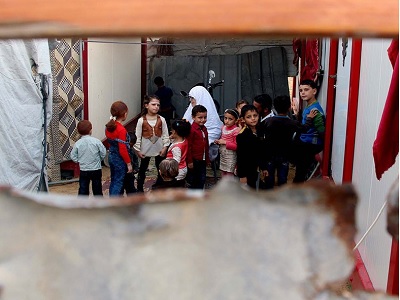
When the third of Israel’s recent major military offensives against my besieged country was over last year, I wrote a memoir about surviving three wars through the brutal black nights of death that I had to witness. My memoir started like this:
The killing is over… but the pain of missing the dead is not.
The killing is over… but the injuries are not healed.
The killing is over… but the houses are no longer standing.
The killing is over… but our souls are not yet cured.
It’s difficult to start writing about Gaza and not be talking about war and death. Here, death has killed our souls and settled indoors instead of coming and going. Death lives with us; it lives in us. I don’t know how life can exist with all this death around; with all this loss; with all this misery.
Over a year has passed since that third merciless assault and I now believe that war has more dimensions to it than the bombing, the death tolls, the lists of those injured and the number of homes destroyed. The war in Gaza was something much bigger and deeper than statistics. The war in Gaza is endless.
It’s not fair to write about life in Gaza without remembering those who suffer in every single, tiny detail of their daily routine. Let’s remember those who lost their homes and now live in caravans, the so-called “caravans of death”. Let’s remember “Iman”, who has to get through the trials of the winter with four children in conditions that experts have called “crazy”.
“Iman Abu Halema” has been married for six years and is in her early twenties. Before Israel’s “Operation Protective Edge” in the summer of 2014, she lived with her husband’s family in a beautiful, big home which was home to more than thirty people in Al-Shujayia neighbourhood of the Gaza Strip. On the day of “Al-Fajr Massacre”, when the Israeli bombs started to fall the family risked trying to get away from the death and destruction. Like many of their neighbours, they expected to return to their home as soon as it was safe to do so. When they did, all they found was, in Iman’s words, “a pile of ash”.
“We had a life there, with memories, joys and sorrows; all were buried under the rubble,” she recalls. “Everything was gone. Many stories are now meaningless; many feelings won’t be felt again; and many smells will be missed forever. It takes time, health and wealth to build a home; it takes so long to create the tiny details, and to make every solid piece beat with life.”
Despite all of that pain, it now seems insignificant compared to her current life in a white caravan, what people in the West would probably call a converted container, or mobile hut. Her husband is now unemployed, like so many others in Gaza and the caravan holds death inside.
Appearances are deceptive. The caravan doesn’t look too bad but in the summer it is like an oven and in the winter it’s like a fridge. Daily life is an ordeal, from getting eldest son Haitham ready for school to completing what would ordinarily be simple tasks. Haitham is in class two in primary school and his grades have fallen since the family found refuge in the caravan. He longs for the return of his cosy room, where he can do his homework in peace and quiet.
https://www.youtube.com/watch?v=UsLlO7DR02E
– Read more: A Day in the Life of a ‘Caravan Lady’ – Sarah Algerbhawi, MEMO





